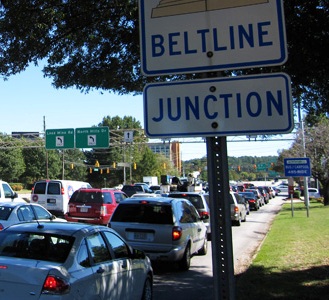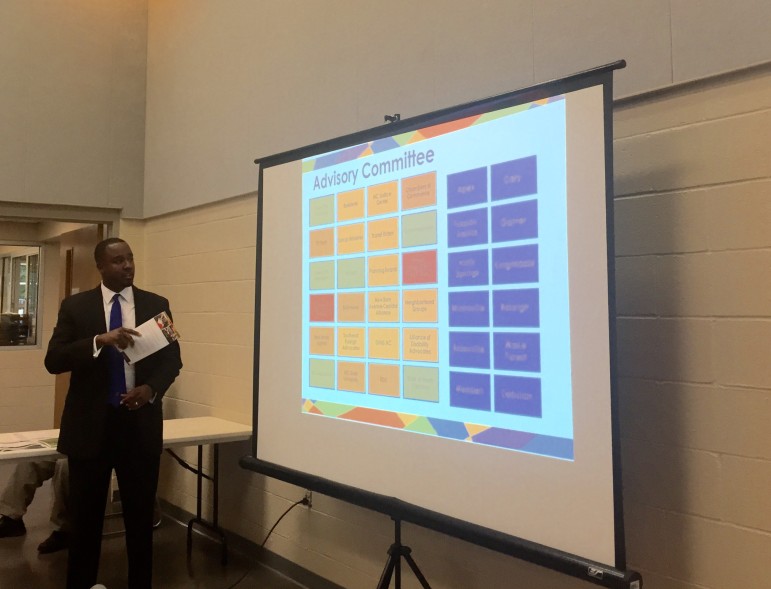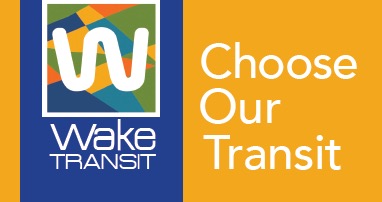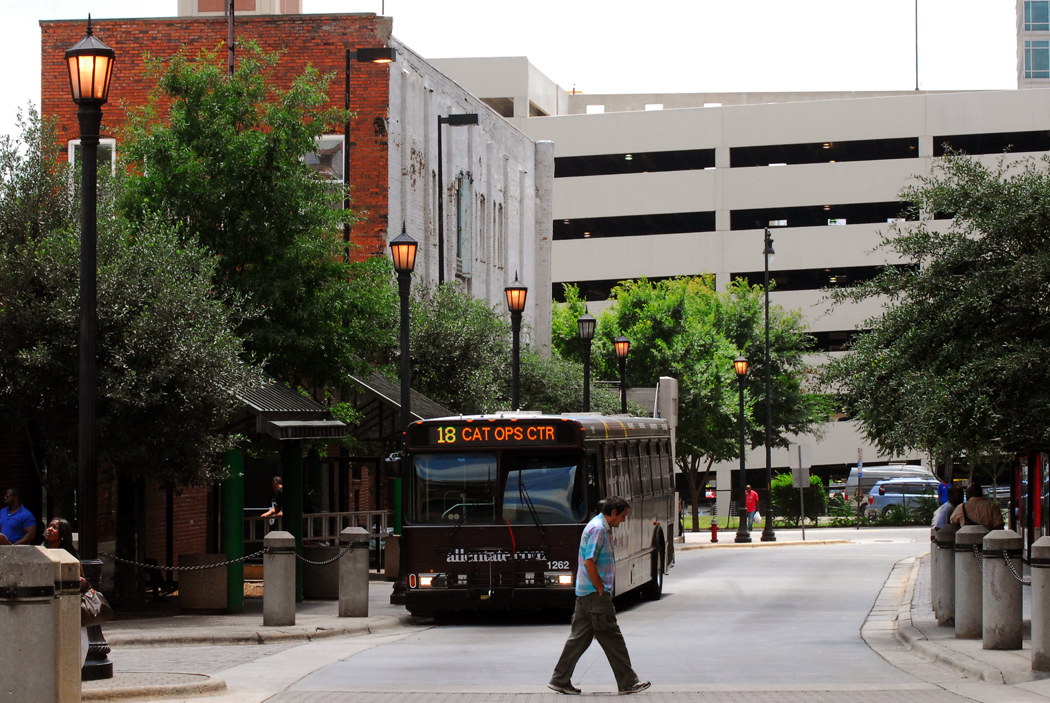City Council met Tuesday for a work session and gave feedback on the soon-to-be-drafted recommendation for the Wake County transit plan. Before the presentation was given, city manager Ruffin Hall said that this would be the “last piece of critical feedback” before the recommendation.
The Wake County transit plan emerged in response to congested traffic across Wake County roadways, starting in 2010. By that point, roads, which included major interstates such as Interstate-40, had reached capacity, leading to longer and longer delays leading up to the present day.

As the city has grown, so have its traffic problems
A committee with dozens of people soon emerged, representing numerous stakeholders throughout the county and an initial draft plan was released. It included the debate between ridership and coverage and between infrastructure versus service.
Tim Maloney of Wake County gave the presentation to the council, saying “It is obvious we are going to need to find better ways to move around our community, through universities, businesses, and so forth.”
He said that in surveys issued online residents of Wake County were more interested in ridership over coverage. Ridership means more frequent bus stops in high traffic areas whereas coverage means extending bus routes to locations that aren’t currently covered. He said that respondents gave equal importance to infrastructure and service.
Sarah Williamson of Wake County detailed the public outreach process. It included more than 250 events, 4,300 survey participants, 100,000 people reached through social media marketing, and 16,700 video views on the transit plan’s website. Currently, they were reaching out for feedback among various stakeholder groups, one of which was the city of Raleigh.
The presentation featured a possible rail project, which would have an initially constructed base and then be built out over time. The first question Maloney asked for feedback on was the debate over ridership versus coverage.

James Borden / Raleigh Public Record
Corey Branch presented the Wake Transit plan to the Central CAC on Monday, July 6
Councilors Gaylord, Baldwin, and Odom said that the focus needs to be ridership. Gaylord said there might be a lack of desire within neighborhoods to have additional bus routes added to their area.
“By putting high frequency transit in far-flung neighborhoods, you would encourage development in those neighborhoods,” Gaylord said.
Councilor Baldwin said that the conversation needed to stay away from the technology either buses or rail would use, as it would be impossible to predict the technologies that would be developed over the course of a ten-year time frame.
“Success is seeing the bus and seeing people on the bus and having more people ride the bus,” Odom said.
Councilor Weeks talked about the need to reach out the southeast Raleigh community to inform them what they would be getting if the plan were to move forward. He said that many citizens living in that area were afraid their bus routes would be taken away from them.
When the discussion moved to rail, councilor Gaylord said he wanted to see this as part of a metric system where the county could see what they would get back from each type of rail investment.
“Until that is defined, it’s just about how people feel [about rail],” Gaylord said.
In both the discussions about buses and rail, Mayor McFarlane expressed her concern about how this will be marketed to the public. The transit plan will go through a voter referendum after the process is completed.

